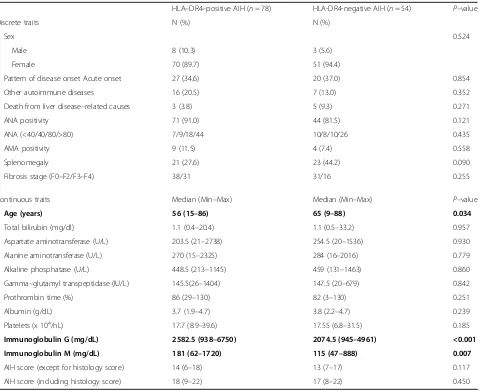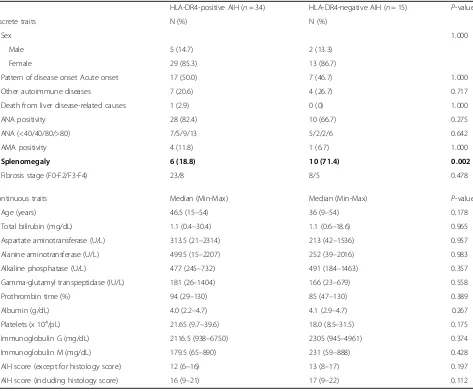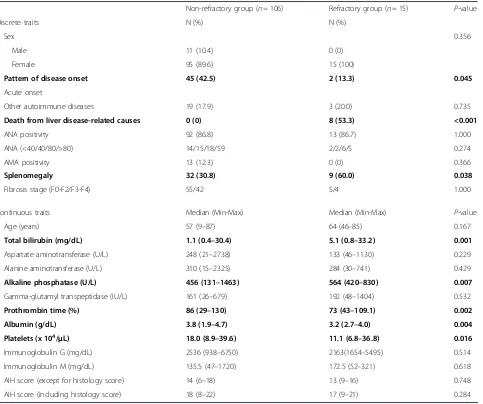Evaluation of the role of HLA-DR antigens in Japanese type 1 autoimmune hepatitis
Full text
Figure




Related documents
Risk Factors of Enterovirus 71 Infection and Associated Hand, Foot, and Mouth Disease/Herpangina in Children During an Epidemic in Taiwan.. Luan-Yin Chang, MD*; Chwan-Chuen King,
GALDIT index bins and their percentages of study area occupation based on the current, 1 m and 2 m (fixed flux and fixed head) sea level rise scenarios.. xT (m) along the
A female university student in need of financial resources to pay for her education cannot make an autonomous choice to trade her genes for tuition.. Donated ova are not only needed
Up to the moment of MigCube and MigHull proposals, MigBSP offers two heuristics to select the candidate processes for migration, both of them based on the descending-sorted list of
A 64-bit hybrid adder design is proposed by using both radix- 4 prefix tree structure and carry select adder for low voltage and low powe r applications.. In order to optimize the
This chapter delineates the scale development process and addresses the following objectives: (1) establishing content validity through rational expert judgments, (2) an analysis
Through our undergraduate research program at Pasadena City College (PCC), we translate our research in sustainable materials into outreach lessons to teach underrepresented
Prevalence of substance use was similar in male and female practitioners, as well as in those working in private practice or in state hospitals.. Conclusion: The prevalence of